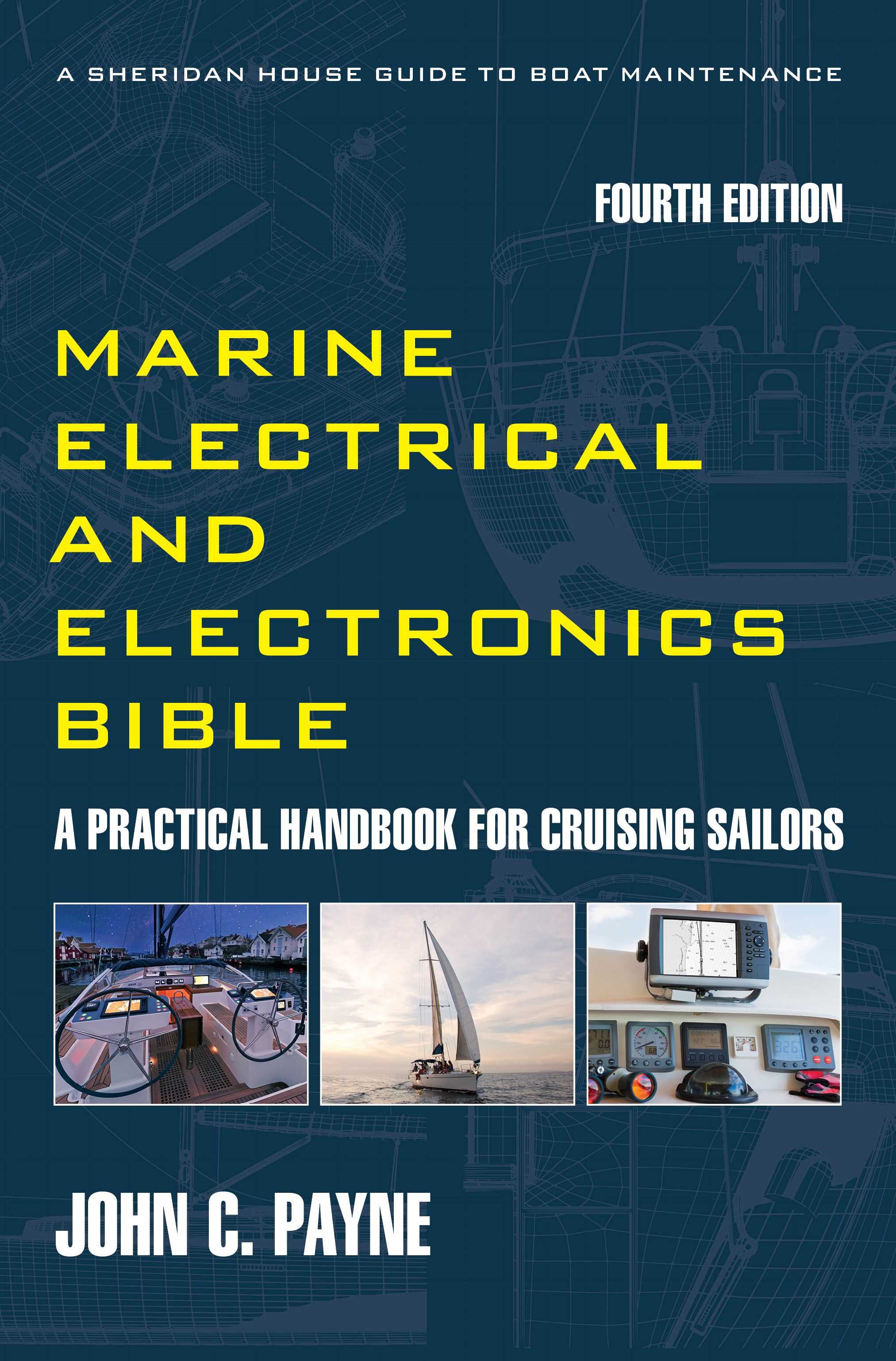The Boat Battery Charger
All boat batteries need the right boat battery charger and every battery type has differing charging requirements. The battery charger and battery charging problems are a major problem for most boaters, whether they are cruising yachts and racing yachts, trawler yachts and fishing boats.
There are many factors to consider after a decision is made on the size and type of battery arrangement.
If you don’t calculate the correct battery bank and battery charger and alternator ratings out you are never going to really solve this with a smart regulator as many try to do.
The Marine Electrical Electronics Bible is now out, buy and save money, make your boat more reliable and be self sufficient.The Engine Battery Charger
The majority of cruising, racing and trawler yachts have to run the diesel engines for excessive periods to recharge the boat batteries. The maximum engine run time aim when using the engine as a battery charger for most is ideally one hour in the morning and one hour in the evening. In most casesthis is hard to achieve. This is often used to coincide with refrigeration pull down times where installed. This is traditionally the charging scenario with flooded cell battery types and this is now changing as Lithium-ion batteries are installed on boats, and these have differing charging sources.
When fuel storage is tight, and that quiet anchorage is too quiet to spoil, cutting down battery charge times is essential. How does battery capacity affect marine battery charging?
Nominal marine battery charger charging rates are specified by battery manufacturers and they generally specify starting and finishing rates. A marine battery actually requires the replacement of 120% of the discharged current to restore it to full charge.
This value is required to overcome losses within the battery due to cell internal resistances during charging. The more battery capacity you have the greater charging capacity. It is better to have an efficient smaller power source than a larger and inefficient one.
It is worth noting that the evolution of solar and wind charging and also new generation hydrogenerators are impacting battery charging as people try and become low emission and low carbon footprint.
Boat Battery Charger Q2 - What about charging current?
A marine battery is effectively self limiting in terms of charge acceptance levels. We cannot simply push back in the discharged value with a battery charger and hope that it will recharge quickly. The battery during charging is reversing the chemical reaction of discharge, and this can only occur at a finite rate. The alternator therefore must be selected if possible to recharge at the battery optimum charge rate as specified.
Boat Battery Charger Q3 - How much charge voltage is required?
The majority of alternators have a fixed output of 14 volts. Some makes having the option of regulator adjustment up to around 14.8 volts for isolation diode voltage and circuit voltage drop compensation. Charge voltage is probably the single most important factor in charging. All other factors, such as charging current are related to it. Revisit Ohms Law for this relationship as it is the fundamental battery charger principle. Problems of voltage drop across the diode have to be considered, and battery chargers with battery sensing are required to compensate for this. The typical voltage drop is around 0.7V, so the charger outputs without sensing will require adjustment of output voltage up an additional level equivalent to the drop. There are new diode units that do not have the voltage drop such as the Victron Argofet and Argodiode.
Boat Battery Charger Selection
A general rule is to select a battery charger based on a factor of around 20% of your house power battery capacity. As many battery chargers have dual and triple outputs, installing a battery charger that is capable of recharging a two-house battery bank or house and engine start battery is a good idea. Many new chargers are available with dual or triple charging outputs. Most marina-based boats have a battery charger connected permanently to charge a single house battery bank, although many boats have multiple house banks and twin engines with separate batteries. Either a separate battery charger or a method of splitting the charge to each battery is required. Gel cells, AGM, and lithium-ion batteries may have different charging requirements, and this should be verified checked prior to using any charger.
Alternator Output Current Selection?
If you have done your homework and performed the math on power consumption, your power analysis table is calculated the maximum current consumption. In practice a further 20% margin is for battery losses to give a final battery charging value. One popular view is that the alternator rating should be approximately 30% of battery capacity, and this is a good start point however not the final value to rely on as every installation is different.
Calculating other boat battery charger factors are all explained along with ready to use tables in the Marine Electrical and Electronics Bible and The Motorboat Electrical and Electronics Manual. All batteries need the right battery charger
